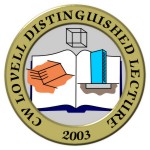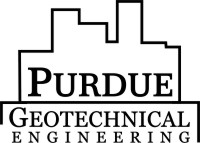
15th C. W. Lovell Distinguished Lecture
4:00 p.m., Friday, October 20, 2017
Lawson Hall, Room 1142, Purdue University
Professor Ross W. Boulanger
Director of the Center for Geotechnical Modeling
University of California, Davis
"Seismic Response of an Embankment on Loose Saturated Sand Treated With Soil-Cement Panels: Centrifuge Tests and Numerical Analyses"
Numerical simulations of a centrifuge model test of an embankment on a liquefiable foundation layer treated with soil-cement panels are presented. The centrifuge model approximates a configuration that has been used for liquefaction remediation at several dams, and the numerical analyses evaluate common approximations used in the design of some of these projects. The centrifuge model was tested on a 9-m radius centrifuge and corresponded to a 28 m tall embankment underlain by a 9 m thick saturated loose sand layer. Soil-cement walls were constructed through the loose sand layer over a 30 m long section near the toe of the embankment and covered with a 7.5 m tall berm. The model was shaken three separate times using an earthquake motion scaled to peak horizontal base accelerations of 0.05 g, 0.26 g, and 0.54 g. The latter two events caused liquefaction in the loose sand layer. Crack detectors indicated that the soil-cement walls sheared through their full length in the third event. Two-dimensional nonlinear dynamic analyses using FLAC were performed using equivalent composite properties for the soilcement treatment zone and the constitutive model PM4Sand for the embankment and foundation soils. The results of the centrifuge model test and two-dimensional nonlinear dynamic simulations are compared. Capabilities and limitations in the two-dimensional simulations of soil-cement grid reinforcement systems, with both liquefaction and soil-cement cracking effects, are discussed. Implications for practice are discussed.

About Professor Ross W. Boulanger
Professor Ross W. Boulanger is the Director of the Center for Geotechnical Modeling in the Department of Civil and Environmental Engineering at the University of California, Davis. He received his PhD and MS degrees in Civil Engineering from the University of California at Berkeley, and his BASc degree in Civil Engineering from the University of British Columbia. His research and professional practice are primarily related to liquefaction and its remediation, seismic performance of dams and levees, and seismic soil-pile-structure interaction.Over the past 25 years, he has produced over 250 publications and served as a technical specialist on over 50 seismic remediation and dam safety projects. His honors include the TK Hsieh Award from the Institution of Civil Engineers, the Ralph B. Peck Award, Norman Medal,Walter L. Huber Civil Engineering Research Prize,and Arthur Casagrande Professional Development Award from the American Society of Civil Engineers (ASCE), and election to the National Academy of Engineering in 2017.


